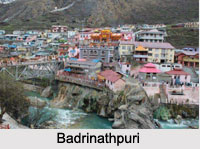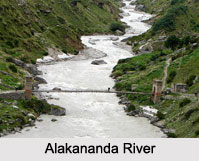 Badrinathpuri is an urban settlement area, located very close to Rishikesh. This place is regarded holy by the people who follow Hindu religion. This town is situated in the Chamoli district in the state of Uttarakhand. Badrinathpuri belongs from the Char Dham pilgrimage, which is known as most important among the Hindus.
Badrinathpuri is an urban settlement area, located very close to Rishikesh. This place is regarded holy by the people who follow Hindu religion. This town is situated in the Chamoli district in the state of Uttarakhand. Badrinathpuri belongs from the Char Dham pilgrimage, which is known as most important among the Hindus.
Location of Badrinathpuri
This town of pilgrimage tourism is located near the foothills of Garhwal hills, on the banks of the Alaknanda River. The average elevation of this rugged town is about 3133 meters. Badrinathpuri is guarded by the Nar and Narayana mountain ranges of Greater Himalayan Mountain Range. It is located very close to the Nilkantha peak (6,560m). Rishikesh (301 km) is the nearest destination from Badrinathpuri.
Referring the name "Badrinathpuri"
 The word "Badri" denotes a berry that was said to cultivate abundantly by the local people while the "nath" refers to Lord Vishnu. Badri is derived from the Sanskrit language, which is known as Indian Jujube tree whose fruit is a berry that can be eaten. Indian Puranas and Vedas referred the abundance of Jujube trees in Badrinathpuri.
The word "Badri" denotes a berry that was said to cultivate abundantly by the local people while the "nath" refers to Lord Vishnu. Badri is derived from the Sanskrit language, which is known as Indian Jujube tree whose fruit is a berry that can be eaten. Indian Puranas and Vedas referred the abundance of Jujube trees in Badrinathpuri.
History of Badrinathpuri
History of Badrinathpuri dates back from the time of Puranas and the Vedas. This place is regarded as holy city and the abode of gods in the ancient Indian literatures and Indian mythology. The Srimad Bhagavatam says that, "There in Badrikashram- the Personality of Godhead (Lord Vishnu), in his incarnation as the sages Nara and Narayana, had been undergoing great sacrament since time immemorial for the benefit of all living entities." According to Hindu mythology, the Goddess Lakshmi took the shape of the berries to provide nourishment to Lord Vishnu during his long reparation in the cold climate of Himalaya Mountain Range. 
Tourism in Badrinathpuri
The chief attraction of Badrinathpuri is the Badrinath temple. According to the Indian history, Shankaracharaya once came across a black stone image of Lord Badrinarayan in the Alaknanda River. It was made of Saligram stone. He initially preserved it in a cavern near the Tapta Kund hot springs. But later in 16th Century, the King of Garhwal shifted the idol to the present temple. The temple has been renovated several times because of damage as a result of age or avalanche. In the 17th century, with the orders of the kings of Garhwal, the temple underwent renovations. After momentous damage in the enormous Himalayan earthquake in 1803, the King of Jaipur restructured it. The main temple in Badrinathpuri is more or less 50 ft (15 metres) tall with a little cupola on top, enclosed within a roof that is covered with gold. Other tourist attractions in Badrinathpuri are Badrinath Peak, Kedarnath, Hemkund Sahib, Trikut Parvata Mountain, Triveni Sangam, Har Ki Pauri, Rishikesh, Laksman Jhula, and Nara Narayan Parvata.
Visiting Information
Badrinathpuri is well connected by roadway only. The distance from Gaurikund to Badrinathpuri is 233km. The best time to visit Badrinathpuri is between June and September.



















